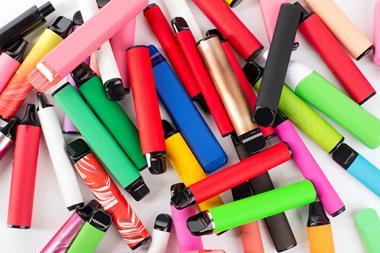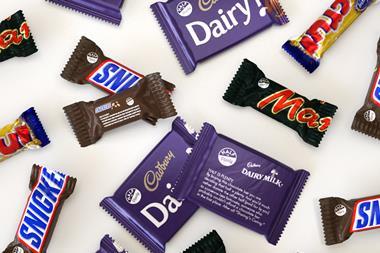What is brand loyalty?
Will Shaw Brand loyalty is a misused and misinterpreted term. It's a measure of the emotional and tangible strength of a brand, how involved a consumer feels with it, and how well those products perform. The net result of good presence, distribution and branding is true loyalty. A brand also has to be there when we want it.It's never just great advertising or packaging, it's a set of things that we're all juggling constantly.
Dorothy MacKenzie You can describe it in terms of how many times someone buys a product, but you're looking for emotional attachment as well. It's about developing commitment either because the product delivers value or because of the emotional values which give people more reason to want a brand. People pick up a whole range of brands which helps them construct a model of how they want to be perceived. They use brands to say something about themselves.
Ros Horne It's about positive choice and making a true engagement with consumers. It's beyond a habit it's a value beyond price.
Aggie MacKenzie Some mothers stay loyal to a brand because they don't have time to look around for anything else. It's force of habit sometimes.
Sarah Baxter You need to have character. Where there's character without function, a product looks pretty but there's not a lot there. But if you have function without character you'll get blasted out of the water by something with a bit of style.
How do you retain it?
Aggie MacKenzie There needs to be an emotional connection with the consumer. People feel better if they think they're being listened to and accommodated.
Chris Cleaver Some brands manipulate the market through distribution. Smirnoff, for example, has the market sewn up you don't need brand loyalty because when someone asks for a vodka in the pub they'll probably get a Smirnoff.
Sarah Baxter It's like a relationship. It's about the making and keeping of 1,000 small promises. M&S has made and broken a few, but how many can they break before people move away?
Angus MacIver New products need to live up to their promise. Changing Walkers cheese and onion flavour was a big move rather than announce new and improved' we found another way to make news of the product by calling it Cheese and Owen.
Ros Horne You've got to keep a product relevant, it's not enough to sit back and think everything's okay. And if you change a product or launch a new one such as Kit Kat Chunky you need to communicate the change. If you've got a product that's seen as the original and best, you've really got to understand why you're changing it and whether you've achieved the new and improved' status. You have to be very careful about your core group of users and understand what they like about your brand, while making it more appealing to those who aren't familiar with it.
Will Shaw There's a difference between people feeling warm about brands and feeling close enough to make a purchase. Mr Kipling always got 100% recall because people felt warm about the product, but we lacked relevance and that's what drove the relaunch. If you choose to measure the wrong thing it can be misleading; people can replay emotions from childhood but that doesn't reflect their behaviour. You need to understand what's actually making them buy.
How can you lose loyalty? What happens?
Ros Horne A lot of people go through stages with brands as they grow up. They go past the point where something is no longer cool, feel less self-conscious and go back to it. Marmite is a good example with a campaign that talked to people who had eaten Marmite as babies, and it suddenly became quite a cool brand.
Angus MacIver We have a quality promise at Walkers every bag, every bite'. People go off a brand quite quickly if they see a few crisps that are green or off.
Also, a lot of companies forget they need innovation in their core product offering. BA, for example, launched Go to compete with the cheap guys but it wasn't what they were about.
Dorothy MacKenzie If the brand lets you down, you're very much implicated. Look what happened with Nike when people became concerned about behind-the-scenes issues like sweatshops. If something undermines trust even if it's quite remote it's a major issue. It can be a very small thing to make people see the company as not quite as trustworthy as they thought. A number of people thought the quality at M&S was going down. Then everyone thought the quality was going down and people weren't buying the products. People are conscious of being involved with something going up or down. They don't want to be part of something that's going down.
Sarah Baxter M&S and British Airways are good examples of brands that didn't sustain loyalty when times were bad. BA rebranded its aeroplanes but neither staff nor interiors were multicultural. It was superficial and the brand fell off its pedestal. You can't rest on your laurels.
Tango, for example, ran its fat man adverts for a very short time and the brand just exploded. If you can get something right, there's a strong sense of brand loyalty, particularly among teenagers who want to be part of something that's very now'. You only need to trigger that positive word of mouth. You don't need to spend millions.
Chris Cleaver Consumers think it's good to experiment in some categories hair care, for example, if they feel a need to change their shampoo. But there are some brands you come back to even if you've been unfaithful or flirted because you realise they provide you with what you want.
Are consumers more fickle nowadays?
Ros Horne People are more likely to judge and take a position on a brand as there's so much in the media. People feel in a better position to comment. Those who had been quite happy buying M&S stopped because there was so much in the media. It didn't have those values attached to it as a brand. Consumers are more aware of the tricks and know whether they've been taken for a ride.
Angus MacIver Consumers are much more marketing or brand aware now a focus group of teenagers talks about branding and brand values more than they did 10 years ago. They will see through anything that's a ploy and they want good value.
Chris Cleaver You can see there being a higher degree of bonding in categories where there isn't a big own label penetration and where there are mostly brands, such as cereal and Kelloggs.
Can you measure loyalty?
Will Shaw We use traditional mathematical ways to measure loyalty according to the number of purchases, but we're also tracking it on attitudinal measures. We use a pyramid which starts with presence and ends with bonding and, if you can get customers to bond with your brand so they believe it's the best, they are much more valuable to you over time. We can then identify the values that led to the bonding which gives us the insight to manage the brand better.
Dorothy MacKenzie The conversion model is useful because it looks at vulnerability to competition people need to look at the context in which that brand finds itself. They can be very loyal until something else comes in which seems better an apparently loyal customer can jump ship overnight. A lot of people are keeping their eyes open and won't hesitate to switch to something else.
Perceptions have changed too. For example, people don't necessarily think that the more you pay the better you get. There's a change in the direct correlation between price and quality.
Angus MacIver A brand is like a person you can tell you've got a good brand when people have conversations about it. People can be quite clear about personalising brands and identifying them as the most popular guy at the party' or the guy who's a big mouth and no-one wants to talk to'.
Chris Cleaver Brands invite you to identify with them and consumers need to recognise common qualities and personalise them. Sometimes the reason people buy a brand is because it fits into their cupboard or goes with their bathroom decor.
Sarah Baxter Lots of people make a specific trip to M&S even though their share of trade isn't particularly high. It's a different measure of loyalty. Loyalty also depends on someone's shopping needs I won't go to my nearest large supermarket if I only need a few things. Customers can be very loyal to discounters at the other end of the market but they wouldn't tell you or their friends and they might even hide the shopping bags or take products out of the packet because they don't want to be seen as that sort of shopper. Some people buy own label biscuits one day and branded the next because Gran's coming round.
Is there a difference between loyalty to products and retailers?
Ros Horne You only need to look at the level of investment in retailer brands to understand how important their value is.
Sarah Baxter It's easier for retailers to offer a wide range of products across categories at different price points under their name. Safeway dropped its loyalty scheme and invested the money into promotions and flyers. Now its got one million more customers and like-for-like double digit volume growth. People love a bargain.
Angus MacIver For brands on the deal sheets like Walkers or Nescafé there's still a question of whether it adds to or detracts from loyalty. Some people think the more promotions there are the less loyal shoppers are to those category's products, but it's hard to stop doing it once you've started. Big retailers would drive loyalty much better if stores were laid out to fit the bulk of the shopping trips made there, rather than the trips they would love to be made there.
How much of an effect does price have?
Angus MacIver It's debatable whether consumers think that if Safeway's cutting prices rather than Walkers it doesn't devalue the brand. However, the independent sector falls into the trap of thinking it can put prices up because it has a convenience offer. When we compare shops that sell our product at a lower or higher price, the ones offering it at a lower price sell more.
Price discounting doesn't usually undermine brand, but price increasing is a worse thing to do if the value proposition doesn't work for consumers. In the grocery market, retailers have driven promotions loyalty as a percentage of your customers' spending money. There you can look at the number of trips made but you need to think about which customers spend a lot of money and how often you see them. Also, advertising that works can last for years so you can get people into your proposition very quickly. But we've spent a lot more on promotions in the last few years and have no indication that the category's got any more or less price sensitive or that it's affected loyalty.
Will Shaw Is price going to be a consistent offer for consumers or will it keep changing? Consumers want to know the kind of shop they're going to and there's something in communicating that. Asda, for example, is consistent in its everyday low price. True loyalty should be able to withstand price changes.
Ros Horne We've almost started to train consumers to buy for reasons other than loyalty, for example, if the category's sold on deals.
What will brand loyalty mean in the future?
Angus MacIver There's going to be a lot more opportunity to give consumers choice in the future while companies are amalgamating brands. I think it will be a cycle some brands will fulfil their promise then they'll get it wrong and fall by the wayside.
Chris Cleaver Brands that will do well will be those that lead their category and aren't frightened to develop. As a brand you need to make sure you're on the retailer's agenda because they decide what we get. You also need an appropriate offer for the type of store. n
{{COVER FEATURE }}
Close menu
- Home
- Retail & Wholesale
-
Products & Suppliers
- Back to parent navigation item
- Products & Suppliers
-
Product Categories:
- Back to parent navigation item
- Product Categories:
- Alcoholic drinks
- Bakery
- Cereals & breakfast
- Cheese
- Chicken & poultry
- Chocolate
- Confectionery
- Crisps, nuts & snacks
- Dairy
- Fish
- Fresh produce
- Frozen
- Household
- Meat
- Own Label
- Sauces & condiments
- Seasonal
- Soft drinks
- Vaping
- Vegan & plant-based
- World foods
- Suppliers
- People
- Reports & Data
-
Topics A-Z
- Back to parent navigation item
- Topics A-Z
-
Popular topics:
- Back to parent navigation item
- Popular topics:
- Cost of living crisis
- Crime
- Deposit Return Schemes
- Finance
- Government & Regulation
- Health
- Inflation
- Loyalty
- Marketing
- Mergers & Acquisitions
- New Product Development
- Sourcing
- Supply chain
- Sustainability & environment
- Technology
- Ultra Processed Foods
- Vaping
- A-Z all topics
- Content by type:
- Events
- Ask iA (beta)
- Subscribe now
Sign in to comment on this article
Not logged in before? Register for FREE guest access today.
You will be able to:
- Read more stories
- Receive daily newsletters
- Comment on stories
Advert















No comments yet